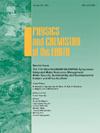人工神经网络估算历史日缺失蒸发量以支持沙特阿拉伯的可持续发展
IF 3
3区 地球科学
Q2 GEOSCIENCES, MULTIDISCIPLINARY
引用次数: 0
摘要
蒸发(EVAP)是水循环的重要组成部分;然而,由于其复杂性和众多的影响因素,其估算具有挑战性。估算EVAP对于确定重金属对环境的影响至关重要。它能够预测污染风险、浓度变化,并提出适当的缓解建议,特别是在半干旱和干旱地区。本研究提出了一种新的方法来评估区域模型在估计麦地那地区测量位置缺失EVAP的有效性。估算是利用1974-1977年1 - 12月的风速(WS)、相对湿度(RH)、温度(TEMP)和蒸发量(EVAP)的时间序列数据生成的;2007-2009),通过采用人工神经网络(ANN)前馈反向传播(FFBP)技术的模型。初始阶段涉及人工神经网络的开发和训练,利用MATLAB中的FFBP技术(版本R2015a)。然后,利用2007年至2009年的TEMP、RH、WS和EVAP数据,利用最优网络预测1974-1976年的EVAP值,这是测量站点的一个缺失参数。第二阶段包括验证预测的EVAP值(1974-1976),用它们来估计1977年在测量点的EVAP值。采用FFBP算法构建4个不同配置的人工神经网络(T1-T4),并对其进行训练。将模型预测值与测点观测到的实际EVAP值进行了比较。最优拓扑的R2值为0.981,均方误差(MSE)为0.019。本文章由计算机程序翻译,如有差异,请以英文原文为准。
Artificial neural networks for estimating historical daily missing evaporation to support sustainable development in Saudi Arabia
Evaporation (EVAP) is a crucial component of the water cycle; however, its estimation is challenging due to its complexity and numerous influencing factors. Estimating EVAP is essential for identifying the environmental effects of heavy metals. It enables the forecasting of contamination risks, concentration changes, and the establishment of suitable mitigation suggestions, particularly in semi-arid and arid regions. This research presents a novel approach to evaluating the efficacy of regional models in estimating missing EVAP at a gauging location in the Al-Medina region. The estimates were generated using time series data on wind speed (WS), relative humidity (RH), temperature (TEMP), and evaporation (EVAP) from January to December (1974–1977; 2007–2009) through models employing the artificial neural network (ANN) feedforward backpropagation (FFBP) technique. The initial phase involved the development and training of the ANN, utilizing the FFBP technique in MATLAB (Version R2015a). The optimal network was then used to predict the EVAP values for 1974–1976, a missing parameter at the gauging site, by employing TEMP, RH, WS, and EVAP data from 2007 to 2009. The second stage includes verifying the predicted EVAP values (1974–1976) by using them to estimate the EVAP values for 1977 at gauged sites. Four ANNs (T1-T4) with distinct configurations were built and trained using the FFBP algorithm. The model's predicted values are compared with the actual EVAP values observed at measurement sites. The value of R2 for the optimal topology was determined to be 0.981, with a mean squared error (MSE) of 0.019.
求助全文
通过发布文献求助,成功后即可免费获取论文全文。
去求助
来源期刊

Physics and Chemistry of the Earth
地学-地球科学综合
CiteScore
5.40
自引率
2.70%
发文量
176
审稿时长
31.6 weeks
期刊介绍:
Physics and Chemistry of the Earth is an international interdisciplinary journal for the rapid publication of collections of refereed communications in separate thematic issues, either stemming from scientific meetings, or, especially compiled for the occasion. There is no restriction on the length of articles published in the journal. Physics and Chemistry of the Earth incorporates the separate Parts A, B and C which existed until the end of 2001.
Please note: the Editors are unable to consider submissions that are not invited or linked to a thematic issue. Please do not submit unsolicited papers.
The journal covers the following subject areas:
-Solid Earth and Geodesy:
(geology, geochemistry, tectonophysics, seismology, volcanology, palaeomagnetism and rock magnetism, electromagnetism and potential fields, marine and environmental geosciences as well as geodesy).
-Hydrology, Oceans and Atmosphere:
(hydrology and water resources research, engineering and management, oceanography and oceanic chemistry, shelf, sea, lake and river sciences, meteorology and atmospheric sciences incl. chemistry as well as climatology and glaciology).
-Solar-Terrestrial and Planetary Science:
(solar, heliospheric and solar-planetary sciences, geology, geophysics and atmospheric sciences of planets, satellites and small bodies as well as cosmochemistry and exobiology).
 求助内容:
求助内容: 应助结果提醒方式:
应助结果提醒方式:


